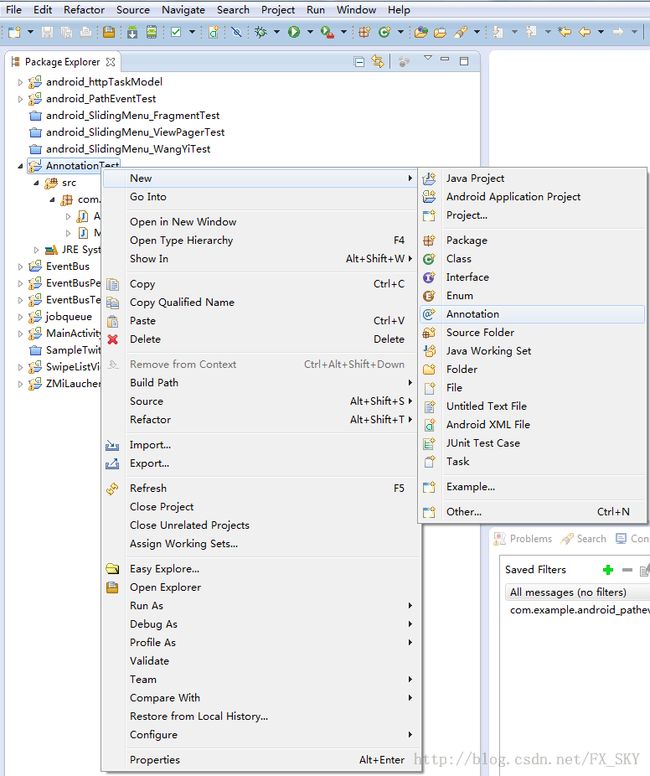Java 自定义注解(Annotation)
在上一篇文章中介绍了注解的原理和适用场景,这一篇开始如何自定义Annotation。
Annotation是不同于Class、Interface、Enum,使用@interface自定义注解时,自动继承了java.lang.annotation.Annotation接口,由编译程序自动完成其他细节。在定义注解时,不能继承其他的注解或接口。
1、自定义MyAnnotation
package com.example.annotation;
import java.lang.annotation.ElementType;
import java.lang.annotation.Retention;
import java.lang.annotation.RetentionPolicy;
import java.lang.annotation.Target;
//@Target({ElementType.METHOD})
@Target(ElementType.METHOD)
@Retention(RetentionPolicy.RUNTIME)
public @interface MyAnnotation {
String name() default "abc"; //指定 默认值
int age();
float[] grade();
}
@interface用来声明一个注解,其中的每一个方法实际上是声明了一个配置参数。方法的名称就是参数的名称,返回值类型就是参数的类型。可以通过default来声明参数的默认值。方法返回值类型必须为primitive(8种基本数据类型)类型、Class类型、枚举类型、Annotation类型或者由前面任意类型之一的一维数组。在这里可以看到@Retention和@Target这样的元注解,用来声明注解本身的行为。@Retention用来声明注解的保留策略,有CLASS、RUNTIME和SOURCE这三种,分别表示注解保存在类文件、JVM运行时刻和源代码中。只有当声明为RUNTIME的时候,才能够在运行时刻通过反射API来获取到注解的信息。@Target用来声明注解可以被添加在哪些类型的元素上,如类型、方法和域等。
注意:注解是不能继承的
2、使用MyAnnotation
@MyAnnotation(name="aaa",age=24,grade={84.5f,90.0f})
public boolean isPermitted(){
return false;
}
3、利用反射获取注解的属性值
package com.example.annotation;
import java.lang.reflect.Method;
import java.sql.Connection;
public class JdbcUtils {
public static void main(String[] args) {
getConnection();
}
@DbInfo(driver="com.mysql.jdbc.Driver",url="jdbc:mysql:///test",user="root",password="root")
public static Connection getConnection(){
// Class clazz = JdbcUtils.class;
try {
Class clazz = Class.forName("com.example.annotation.JdbcUtils");
//方法1
Method[] methods = clazz.getMethods();
for (Method method : methods) {
if(method.isAnnotationPresent(DbInfo.class)){ //判断该方法上是否有DbInfo注解
DbInfo info = (DbInfo)method.getAnnotation(DbInfo.class);
System.out.println("Method["+method.getName()+"],driver["+info.driver()+"],url["+info.url()+"],user["+info.user()+"],password["+info.password()+"]");
}
}
//方法2
Method method = clazz.getMethod("getConnection", null);
DbInfo dbInfo = method.getAnnotation(DbInfo.class);
if(dbInfo!=null){
System.out.println("Method["+method.getName()+"],driver["+dbInfo.driver()+"],url["+dbInfo.url()+"],user["+dbInfo.user()+"],password["+dbInfo.password()+"]");
}
} catch (ClassNotFoundException e) {
e.printStackTrace();
} catch (NoSuchMethodException e) {
e.printStackTrace();
} catch (SecurityException e) {
e.printStackTrace();
}
return null;
}
}
